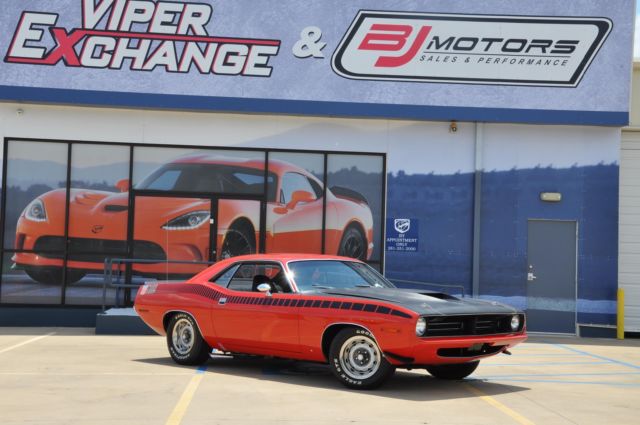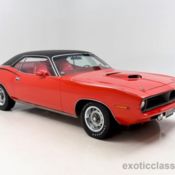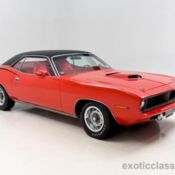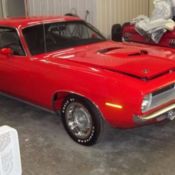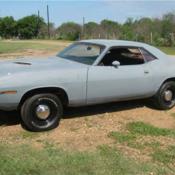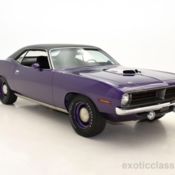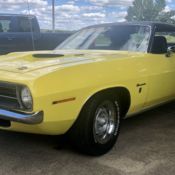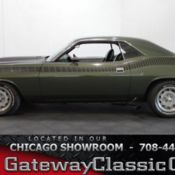1970 Plymouth Barracuda, Red with 119,682 Miles available now!
Price: -
Item location: Tomball, Texas, United States
Description:
1970 Plymouth Barracuda --
This beautiful 1970 Plymouth Cuda 340 - 6 Barrel Plymouth Cuda is in good original condition. This is one car that's is in all original condition with the exception of the block that is a date code correct but a non matching number block. When the car was purchased by its owner it was believed to be a survivor car. The design was guided by Tom Hoover, later known as father of the Hemi;based on engine analyses, he set the bore size at 4.04, though the cylinders were just 4.46apart. The valves were as large as possible, which meant moving the spark plugs ever so slightly (0.08) further out. When the 340 came out in late 1967, it was a street fighter from the start. Separating the 340 from the standard-performance 318 were not just 22 cubic inches, but also: a dual timing chain with a windage tray to improve top end engine RPM by keeping the crank counter weights from churning the oil in the pan. Big 2.02 inch intake valves and 1.60 inch exhaust valves, vs the 318s 1.78 intake and 1.50 exhaust a high-rise dual plane intake larger exhaust manifolds a viscous fan drive to cut power loss at high speeds an 850 cfm carburetor (from 1971 to 1973) a forged steel crank (through 1972s engine #39118000, when a cast iron crank was used) high-performance heads thicker bulkheads and higher main bearing caps to strengthen the bottom end stronger connecting rods a revised oil pump with a 90 degree adaptor a special carburetor and cam The 340s initial power rating was 275 horsepower, gross. An early 340 in a lightweight A-body or Road Runner embarrassed many owners of cars with big block engines. Many parts interchange with 318s and 360s. 1970-71 engines were painted orange; they changed to blue very late in the 1971 model year; the camshaft on automatics had a 268 intake and 276 exhaust opening duration, with 44 overlap (manuals had 276 intake, 284 exhaust, 52 overlap). Valve lift was 0.430 intake, and 0.445 exhaust. The 10.5:1 compression ratio was far above the 318s 8.8 and the 360s 8.7. A six-barrel version (with three two-barrel carburetors) brought higher-performance heads, new valve covers, and material added to the bulkheads to allow for four-bolt main bearing caps. This one used an silenced air cleaner, rather than the dual-snorkel one used in the four-barrel; it was only sold in the Plymouth AAR Cuda and Dodge Challenger T/A. For the 1971 cars, the 340 (and the 360) came with the J type heads, using a single casting, with different machining for the different sized valves. 360 heads were used in the 1970 340 Six-Pack AAR/TA, which had the same size valves.Vehicle Details:
- Condition: New
- Make: Plymouth
- Model: Barracuda
- SubModel: --
- Type: Coupe
- Trim: --
- Year: 1970
- Mileage: 119,682
- VIN: 0000BS23JOB309942
- Color: Red
- Engine size: 340
- Power options: --
- Fuel: Gasoline
- Transmission: Manual
- Interior color: Black
- Options: --
- Vehicle Title: Clear Want to buy? Contact seller!
